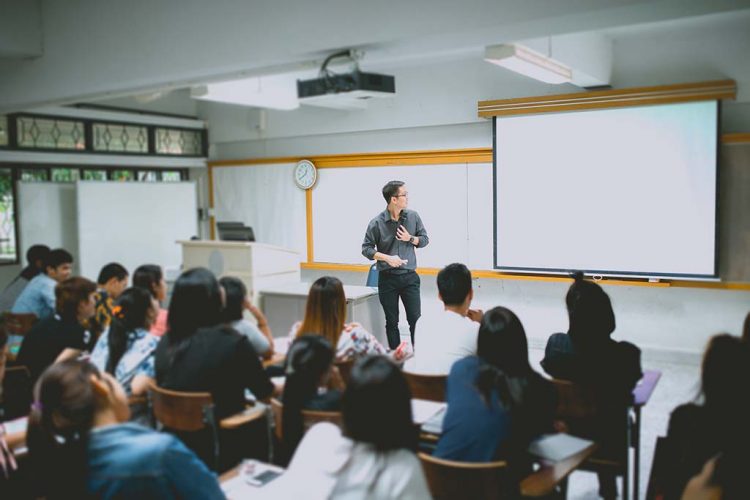Find the Best Primary Science Tuition Singapore for Enhanced Learning
Find the Best Primary Science Tuition Singapore for Enhanced Learning
Blog Article
Checking Out the Different Training Methods in Main Scientific Research Education And Learning Today
The landscape of primary scientific research education and learning is developing, with numerous training methods getting prestige in modern classrooms. Inquiry-based knowing, hands-on experiments, and the integration of technology are redefining just how instructors engage young minds. Additionally, joint methods and distinguished direction are being used to satisfy the varied needs of trainees, enhancing both involvement and understanding. As we take a look at these methodologies, questions emerge regarding their effectiveness and the ramifications for future educational practices. What might these shifts in technique mean for the future generation of learners?
Inquiry-Based Knowing
Inquiry-Based Understanding (IBL) is an instructional strategy that motivates pupils to discover scientific concepts via doubting, investigation, and hands-on trial and error. This technique emphasizes the duty of trainees as energetic participants in their knowing, promoting important thinking and analytic skills. By involving with real-world questions, students end up being inspired and interested, which enhances their understanding of clinical concepts.
In IBL, educators work as facilitators, assisting trainees as they navigate their questions instead of delivering information directly. This student-centered technique enables for distinction, accommodating numerous learning speeds and styles. Students develop skills in creating hypotheses, developing experiments, and analyzing information, which are crucial for clinical literacy.
Furthermore, IBL cultivates collaboration amongst pupils, encouraging them to share searchings for and concepts. This collective query advertises social abilities and a sense of area within the classroom. The process of query motivates strength, as pupils find out to accept failing as a tipping rock towards understanding.
Hands-On Experiments
Hands-on experiments are an important component of effective science education, enhancing the principles of inquiry-based understanding. These experiments permit students to engage straight with scientific principles, cultivating a much deeper understanding through experiential discovering. By manipulating products and observing end results, young students can grasp abstract theories in substantial methods.
Such activities promote important reasoning and problem-solving skills, as trainees assume end results, conduct experiments, and analyze results. This process urges them to ask concerns, improve their understanding, and develop a clinical attitude. Hands-on experiments can be customized to diverse knowing designs, making sure that all trainees have the chance to involve meaningfully with the web content.
Furthermore, hands-on experiments usually urge partnership amongst peers, promoting synergy and communication abilities. Functioning in teams allows pupils to share concepts, review searchings for, and gain from each other, which boosts their general educational experience.
Integrating hands-on experiments right into the key scientific research curriculum not just enriches the finding out atmosphere but also grows a long-lasting interest in scientific research. By actively joining their education and learning, pupils are a lot more likely to develop an enthusiasm for scientific questions that expands past the class.

Modern Technology Integration
Incorporating technology into key scientific research education has ended up being significantly vital in promoting trainee engagement and improving discovering results. Using electronic devices, such as interactive simulations, online laboratories, and educational software application, gives students with chances to check out scientific principles in innovative ways. These sources facilitate a deeper understanding of complicated topics by enabling students to imagine and manipulate variables that would be impractical in a conventional classroom setup.
In addition, innovation assimilation urges customized discovering experiences. Trainees can progress at their own rate, reviewing challenging ideas through multimedia sources, which satisfy various learning designs. This flexibility not only supports private development but also cultivates a sense of autonomy in learners.
Additionally, modern technology offers as a bridge to real-world scientific research, connecting trainees with present study and professional payments. Accessibility to on the internet data sources and clinical journals broadens students' point of views on scientific inquiry and fosters vital assuming abilities.
Collaborative Learning
Collaborative understanding plays a crucial function in key scientific research education and learning by promoting team effort and communication skills amongst students. This strategy motivates learners to collaborate, share knowledge, and participate in analytical, which enhances their understanding of clinical principles. By taking part in group activities, students find click resources out to verbalize their ideas, pay attention to varied viewpoints, and discuss options, all of which are necessary abilities in both scholastic and real-world contexts.

Study indicates that collaborative learning can result in raised inspiration and engagement in science topics, as pupils discover enjoyment in common experiences (primary science tuition Singapore). Additionally, this method prepares pupils for future collective endeavors, furnishing them with the skills required for reliable teamwork in college and expert settings. Ultimately, embracing joint understanding in key science education and learning can substantially enrich the understanding experience and advertise a much deeper understanding of clinical query
Separated Guideline

Differentiated instruction can manifest in different ways, such as differing the material, procedures, or products of learning. Educators may use tiered assignments that give differing levels of intricacy, enabling students to work at their corresponding preparedness levels. In addition, flexible grouping strategies can help with cooperation amongst students More hints with various capabilities, promoting peer knowing.
Evaluation plays a vital duty in this approach, as it educates guideline and aids teachers recognize each student's unique requirements. Formative analyses, such as monitorings and quizzes, can lead teachers in changing their approaches to enhance finding out outcomes. primary science tuition Singapore. Eventually, by implementing separated guideline in main science education and learning, educators can cultivate a much more efficient and fair understanding setting, encouraging all trainees to reach their full potential in understanding clinical sensations
Verdict
In recap, the diverse teaching strategies in primary science education, consisting of inquiry-based learning, hands-on experiments, modern technology integration, collaborative understanding, and distinguished instruction, collectively add to a more effective learning atmosphere. These approaches promote crucial thinking, analytic abilities, and a deeper comprehension of clinical ideas. By executing these strategies, teachers can produce engaging and helpful classrooms that attend to the different needs of students, ultimately promoting a long-lasting rate of interest in science and boosting academic achievement.
Inquiry-Based Understanding (IBL) is an instructional technique that urges pupils to explore clinical principles with questioning, investigation, and hands-on trial and error.Joint discovering plays a vital duty in primary scientific research education and learning by fostering team effort and interaction abilities amongst trainees.Research study shows that joint understanding can lead to raised motivation and engagement in science subjects, as pupils locate enjoyment in shared experiences.In fostering an inclusive understanding atmosphere, separated guideline arises as an essential strategy to accommodate the varied needs and capabilities of students in key scientific research education. Ultimately, by applying differentiated instruction in key scientific research education, educators can cultivate a much more equitable and effective understanding atmosphere, empowering all trainees to reach their full potential in comprehending clinical sensations.
Report this page